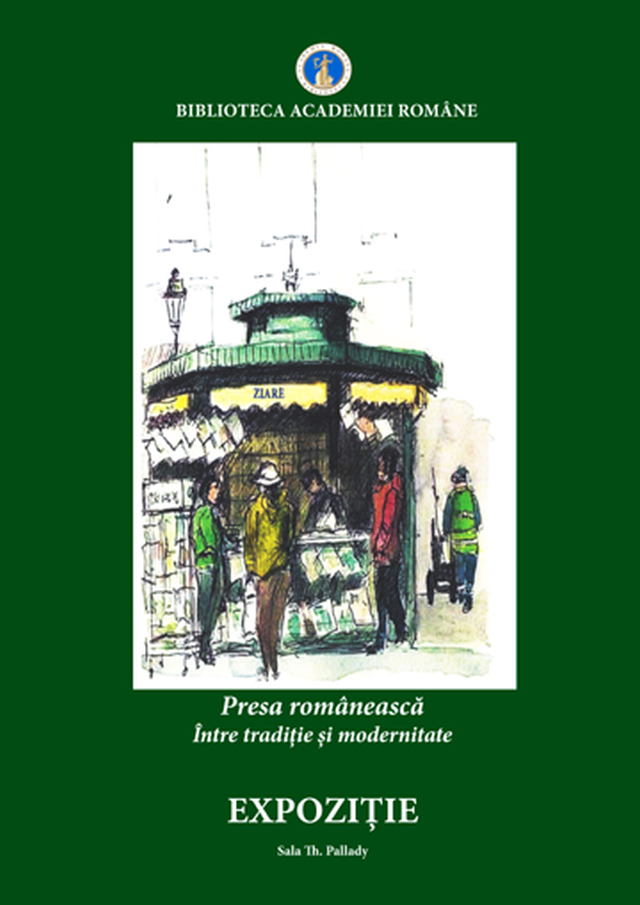From the history of the Romanian press
New exhibition looks at the 200-year long history of the press in Romania.

Steliu Lambru, 20.03.2023, 14:00
The daily press
has an almost 200-year long history in Romania, with the first newspapers
appearing at the end of the 1820s. However, the earliest Romanian publication
is considered Courier de la Moldavie,
which first appeared in Iași in 1790, was published in French, and contained
domestic news from Moldavia, as well as foreign news.
We find this
from an exhibition hosted by the Romanian Academy Library called The Romanian
press between tradition and modernity and which looks back at the beginning of
the press in these parts. The Romanian Academy Library has in fact the biggest
collection of newspapers and periodicals published on Romanian territory or from
abroad. Out of a total of 14 million items evaluated at 3 billion euros that
are currently in the Library’s possession, more than a half, namely around 8.5
million, are newspapers and periodicals.
The curator of
the exhibition Daniela Stanciu told the opening of the exhibition that the
press is one of the best ways to find out what the people who lived before us
experienced:
When we speak
of the press in general, we don’t speak only of newspapers and magazines, but
also of other publications appearing regularly, including annuals, specialist
journals from various fields and even conference papers. So, the journalistic
heritage of a nation is in fact its most extensive history: a history that was
being written at the very moment the events were taking place. The reporters’
accounts reflect the events as they took place, providing first-hand
information to the public. The witness accounts of important events in the
history of the world are also important because they provide aspects that may
escape the historians’ retrospective and analytical gaze. Moreover, the news
reports capture the ineffable thrill of the daily lives of the people living in
those days, with their mentalities, habits, beliefs and values. When we reread
them decades or even centuries later, they provide a quite clear image of what
the French call l’air du temps, the spirit of the times.
The emergence and development of the press is
connected to the development of technology. The printing press played a
decisive role in the dissemination of information. Daniela Stanciu explains:
The development of the printing press led to
the development of the press and the fast spread of information through
newspapers. Before that, leaflets were the only means of informing the
population. Apart from newspapers and magazines published in the Romanian lands
in the 19th century, the exhibition also features a number of
leaflets. One announces the publication of Curierul Bucureștilor, later
to become Curierul românesc, and the leaflet with the Proclamation of
Izlaz, the manifesto of the 1848 movement which is considered the first modern
constitution. The proclamation was read by Ioan
Heliade Rădulescu on 9th June 1848 in Izlaz, a small port
town on the Danube that was not under Turkish control, which is why it was
chosen. The exhibition also features a leaflet about the establishment of the
printing house of the Metropolitan Church in 1859 and a leaflet containing the
speech given by Alexandru Ioan Cuza before the Elective Assembly in 1860, and
another in which King Carol I urges Romanians to cross the Danube.
What else can we
see in this exhibition? Curator Daniela Stanciu tells us more:
The newspapers
on display are part of the so-called Sărindar press, like Adevărul and Dimineața,
which are well-known. The 1836 issue of the magazine Muzeul Național. Gazetă
literară și industrială is the first to include a section about the
weather, on the last page. This paper also published the letters between Constantin Negruzzi and Heliade Rădulescu
under the heading ‘Correspondence between two Romanians’, one from Wallachia
and the other from Moldavia. Also on
show is a copy of the magazine Claponul. Foiță hazlie și populară, which
was written entirely by Ion Luca Caragiale and of which only six copies appeared
in 1877, but which contains sections such as ‘Doughnuts’ and ‘The final hot
doughnuts’, which provide commentary on current political events in typical
humorous Caragiale fashion. We also have the newspaper Adevărul, which
first appeared in 1871 in Iași and was moved to Bucharest in 1872. Very few
people in Romania know it, but this is the first paper to publish caricature;
the first to publish telegrams from abroad and the first Romanian paper to have
its own building, its own library, publishing house and archive. As shown by
records, it was also the first paper whose employees benefited from secure, and
also quite big, wages.






























